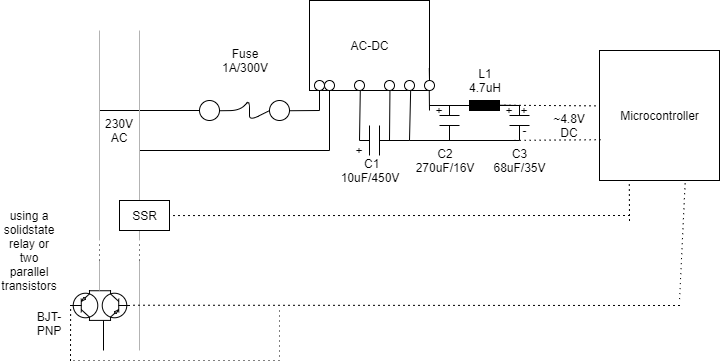
Converting AC to DC for Microcontrollers: A Beginner’s Guide
As a beginner in the world of electronics and microcontrollers, one of the most important concepts to understand is the conversion of AC (alternating current) to DC (direct current). Microcontrollers typically run on DC power, so it is essential to know how to convert the AC power from your wall outlet to DC power for your microcontroller projects.
In this guide, we will walk you through the basics of AC to DC conversion, the different methods you can use, and how to safely power your microcontroller projects. Let’s get started!
Understanding AC and DC Power
AC power is what you typically get from the wall outlet in your home. It is the type of electricity that changes direction periodically, usually around 50-60 times per second (measured in Hertz). On the other hand, DC power flows continuously in one direction. Microcontrollers, like Arduino and Raspberry Pi, require DC power to function correctly.
When powering microcontroller projects, you will need to convert the AC power from your wall outlet to DC power. There are a few different methods to do this, each with its advantages and disadvantages.
Methods of AC to DC Conversion
Using a Rectifier
One of the most common methods of converting AC to DC power is by using a rectifier. A rectifier is an electrical device that converts AC power to DC power by allowing only the positive half-cycles of the AC waveform to pass through. There are two main types of rectifiers: half-wave rectifiers and full-wave rectifiers.
Half-wave rectifiers only allow one half of the AC waveform to pass through, resulting in a pulsating DC output. Full-wave rectifiers, on the other hand, allow both halves of the AC waveform to pass through, resulting in a smoother DC output.
Using a Transformer and Rectifier
Another common method of AC to DC conversion is by using a transformer and rectifier. A transformer is used to step down the voltage from the wall outlet to a lower level, which is then rectified by a rectifier to convert it to DC power.
This method is often used in power supplies for microcontrollers as it provides a steady and reliable DC output. Transformers can also isolate the output from the input AC power, providing an additional level of safety.
Safely Powering Your Microcontroller Projects
When working with AC power, it is essential to take the necessary precautions to ensure your safety and the safety of your microcontroller projects. Always use insulated tools when working with electricity, and never touch exposed wires while the power is on.
When converting AC to DC for your microcontroller projects, make sure to use a reliable power supply that is rated for your specific microcontroller’s voltage and current requirements. Using an inadequate power supply can damage your microcontroller and pose a safety hazard.
By understanding the basics of AC to DC conversion and following safety protocols, you can power your microcontroller projects effectively and safely. Experiment with different conversion methods to find the one that works best for your projects, and happy tinkering!
Was this helpful?
0 / 0